Reflections on shifting practice in Bodies:On:Live Magdalena:On:Line 2021
To the Magdalenas around the world, to those who were able to attend the first online Magdalena festival and to those who presented, shared and had a creative vision to light the path.
Thank you all for the gift of sisterhood and companionship. I am sorry I wasn’t post-human enough to be able to participate in all the events, but I did my best to follow the artists named in this reflection/recollection.
To the team, thank you for bringing me here, there, and somewhere in between on cyberspace.
-------
On the branch of a tree / a bird was eating a fruit / On a nearby branch / another bird looked on /
The latter went closer / and then realised / that they were both / just one bird.
This ancient Indian story came to my mind while reflecting on my experience as an invited artist and as a participant, in BODIES:ON:LIVE MAGDALENA:ON:LINE 2021 . In the festival, I believe the first bird was the artists who had set up their creative roots in the immateriality of the Internet, digitally competent, with a body of work and years of experimentation behind them. The other bird was the cautious and critical performers, writers, directors candidly declaring their uneasiness towards online adaptations of live work, alongside the curious and adventurous, who kept watching closely to grasp techniques, processes and approaches. But what was the fruit? Technical knowledge? The awareness of the medium? An uncanny ability to make everything appear smooth on Zoom and other online platforms? All of this - but digging deeper, above all for me it was the courage to fight against the constraints forced on artists by the pandemic, the inclusiveness in conceiving a truly cross-cultural digital space for creative exchange, and the passion for moving forward and celebrating our identities as artists in such difficult circumstances.
In the sharing of my work I felt welcomed and supported, as a participant/spectator I was invited to be a co-creator of meaning and often – to my great delight – to blur the boundaries between being and performing, in a fluid exercise of our communal creative muscles and expressivity.
In many ways for both the artists and the participants, the first online Magdalena festival conceived by Elizabeth de Roza with Helen Varley Jamieson provided a shared opportunity to think creatively outside the box, to break the psychological isolation, to feel part of a wider context where it was possible to listen and be listened to, as well as to learn from each other, with curiosity and a non- judgemental attitude, testing the future of creative life post-pandemic and re-imagining it less bleak, more defiant, with growing resilience and hope. Through further participation and active involvement in disseminating the event, I also came to understand how the serendipity of the pandemic had been generating the building blocks of the festival, and its embedded argument for a more sustainable and accessible future of performance making, both live and digital.
Similar to the monthly At:Home:Live meetings, which brought up the many and varied challenges (but also the chances) arising from our increasingly hybrid lives, a pattern of reconnection and emotional housekeeping, alongside discussing and discerning, was established as a sort of internal protocol for gatherings at events. We were looking after each other as well as looking at each other through screens. The actual process of coming together - virtually connected in doing and witnessing some new and familiar work in an unfamiliar territory - was instrumental in creating a mind-set of remote proximity, which allowed us to appreciate each other’s online presence despite openly questioning notions of embodiment, theoretically and in practice.
From addressing the gaps in our digital literature and performance making, to finding the creative potential in the constraints and apparent limitations of working with the technology, without preaching to the converted or indoctrinating the newcomers, this same ethos was kept throughout the festival, opening up several spaces for honest and invested conversations based on the personal experiences of artists forced by the circumstances to find new strategies and make practical adjustments to their work. Throughout the festival I have constantly been pondering on the title, BODIES:ON:LIVE, and its suggestion of capturing our physical experience in the mediated interaction of our global bodies, with all the liveness that comes with that experience, which is no less ‘real’ just because the work and the contact happens online.
As well as being a presenting artist in the programme, I tried to participate in as many events as possible, starting with Helen Chadwick and her workshop called The Creativity Door, a gentle yet powerful invitation to undertake an individual journey grounded in a deep process of self-knowledge and discovery, through defining, drawing, writing about, physicalizing and vocalising the perception of our own roots. I then moved on to experience the energy and psychophysical release brought by Taranta Atelier, a workshop led by Maristella Martella and inspired by dance rituals connected to the Southern Italian phenomenon of Tarantism, which brought me into my homeland for a few hours. Both workshops gave me an impression of liveness on digital which was generated from the focus and connection with my bodymind processes, in a voluntary act of opening, tuning in and reaching out through the membrane of the technology.
Affirming, instead of suppressing, the differences and ambivalences towards making and working online, the official opening event started with an upfront introduction by Jill Greenhalgh, which I appreciated in its authenticity and openness regarding the struggle and doubts she faced in confronting the digital adaptation of her own performance work, as well as the statement that she will never take for granted the chance of being able to work with other artists in a material space post-pandemic.
Auspicious news came from a Zoom-defiant Parvathy Baul that the festival had begun on the day Kali was menstruating, which is meant to bring good luck. Her singing invocation to the Goddess not only bestowed a propitious ritual upon us against all (technical and human) obstacles, but also set the bar for what ‘liveness’ and presence might mean online. When the power of her voice saturated the computer mic and Parvathy commented that ‘Kali has come’, the devotion in associating a technical glitch with the descent of a powerful Indian deity onto the platform was an image of epic dimensions set against the mundane deficiency of Zoom audio settings. However, it also spoke about how the performer’s transmission of her intentionality - as well as her purposed and self-focused, directed mental and physical energy - was a masterclass in reaching, connecting and affecting her virtual recipients no matter what. Having witnessed and worked in Bengal with singers and musicians from the Baul tradition, I reflect on how, through that quality of connection which comes from a total embodiment of a spiritual act of singing, Parvathy was able to focus purely on the human communication at a deeper level, despite the remoteness and the apparent screen barrier.
On the other end of the spectrum in the quest for embodiment and participation through new technologies, I eagerly participated in cyberformance sessions and workshops led by Helen Varley Jamieson and the team behind the digital platform UpStage(link is external), who were inviting participants to explore, test and play with its functionality and tools in an informal yet expert-led approach. Through a fascinating and almost hypnotic semi-improvised session for the work in progress of Mobilise/ Demobilise, the audience was invited to participate through the live chat visible on the virtual stage and was involved as a co-creator of meaning, while interacting with the cyberfomance as it happened.
Through what for me was a substantially playful experiment, I learnt the function and effects of the semantic map of the platform in action, which appears to be both sophisticated and simple at the same time. The agency given to the audience to play freely, randomly and creatively via the chat - together with the blurring of the positioning between performer and participant – provoked a risk-taking and seamlessly never-ending element of surprise. This process of constant, fluid and reciprocal manipulation generated a complex echo chamber of multiple and interchangeable signifiers, where words, sentences or images were picked up from the chat by the cyberformers and translated into a visual language of symbols and texts on the cyberstage.
The work I was invited to participate in on UpStage provided a creative space of coming together and a ludic arena to test boundaries in digital form and content - I started responding to the signs creatively, taking inspiration from the comments by other participants on the chat, and the associations conjured by the images, the sounds and the juxtapositions provoked by the cyberformers.
The reciprocal manipulation of cyberformers and audience members is an exciting and edgy line of interpersonal communication within an online group, which opens an interesting area of investigation, related to modes of participation on digital platforms which might also mirror those on social media. Additionally, there is a reflection to be made about where the ethical responsibility lies in the generation of the ‘text’ through the chat, and how the developing content is bound to be interpreted by both the performers and audience members as the performance moves on and the process gains momentum.
UpStage was also used for the sharing of Jeux de Massacre, a collaborative work in progress conceived by Christina Papagiannouli in collaboration with the UpStage team as a sharply ironic cyberformance adaptation of Ionesco’s play, using the pandemic’s dark statistics, and born of (and within) the lockdown boredom and the creators’ feelings of being stuck in alienating circumstances. I felt the black and white palette coupled with the clinical ambience of the virtual stage fully conveyed the traumatic essence of the Covid ‘plague’ with a sardonic and caustic look at the human struggle to survive at all costs.
In terms of adaptations, I was very much looking forward to experiencing the online version of Daughter by Jill Greenhalgh, a long running, successful live performance adapted for the online environment by Jill and her performers with the technical support of Christina Papagiannouli on the Ohyay platform. Although there is an extra challenge to transpose a live performance which was never conceived for online engagement, the encounter was preserved and translated into one of a different nature, which spoke of our current time in the digital fragmentation of personal stories and bodies, waiting for contact in different ‘rooms’ in which the audience could choose to enter. While it did not resemble the original performance in form and intention, something else was surfacing, and more than a shared experience amongst a physical congregation of spectators, it was private and personal. The one to one relationship with the performer in a digital space inhabited by other - invisible but present- audience members as witnesses, still resonates with me. The nature of the participation felt predicated upon an invite to enter the world and the existence of each performer, while the technological distance was somehow reassuring, as it left a gap to (discreetly) project my own experience of being a daughter into the conversation, as well as appreciating the human sharing that was taking place. While other spectators might have found it intimidating, I really enjoyed the window open to the possibility of interacting with the performers and to be given agency to respond to them, and possibly I would have liked to have more of that.
I am also fond of my participation in the visual feast of the carefully crafted Await by the extraordinary Debora Hunt bringing puppet-objects to life, and to witness the highly refined and delightful minimalistic storytelling of Mrs Blister Changes Boots by Gilly Adams, as well as the power of the unsettling improvised sharing of Angry Women led by Annie Abrahams, and the tender, dynamic and surreal aerial performance by Jana Korb.
In Headcount by Karla Ptáček I was impressed by the quality of the writing and the dramaturgy unfolding on Zoom, as well as by Karla’s natural ability to take us into the digital space with her, in a dynamic, funny, honest and truly captivating performance. I had the pleasure of meeting her a bit better in a digitally warm and absorbed conversation around the (virtually) crackling fire lit for us by Christina Papagiannuoli in the ObservaStory, the online networking and exhibition space introducing the history of the Magdalena Project which Christina created and curated, and which also doubled as a social space for gathering, networking and meaningful chats in a separate digital space from the Zoom matrix of the festival. The slight anxiety of disconnecting from the main platform to adventure on my own into gather.town was rewarded by the fun of moving around with my mini-me avatar (which I assembled) and observing my virtual self, crouched around the fire-pit in a standby posture, while I was enjoying meeting my new friend. I admit I started to empathise with the avatar so much that I felt a bit sorry that she couldn’t have a ‘real’ drink as I had, but also grateful that I – through her – could pause for a while and meet a likeminded companion in this journey. It was then that I realised how much I was missing one-to-one communication and how refreshing it was to be given the chance to have one in that space.
While new performances and other events were under way each day, the three panels curated by Elizabeth de Roza provided a strand of reflection, recollection and articulation of ongoing practice and performance research, which ran parallel to the presentation of creative work and provided much food for thought, as some of the panellists, being artists themselves, managed to conjure an explicit performative atmosphere within their presentations.
The panels provoked discussions and debate, while critically questioning a wide range of practical and theoretical perspectives. In the first, Bodies:On:Live, we heard Jill Greenhalgh, Rakini Devi and Maria X, debating about what is LIVE-ness and live. Three powerful voices speaking about honest and legitimate doubts regarding the translation and migration of live processes online, as well as the uneasiness in fully embracing the medium, while also pointing at the viscerality of digital performance experiences as a form of corporeality through the wires. Some reflections flagged up the need of persevering with an artistic presence and identity during the pandemic, while opening up about governmental censorship and the political aspect behind the creative use of the internet and cyberspace.
I embraced the chance to explore and expand on my proposal and practice of the online creative space as an ’ecology of becoming’ in the Shifts in Practice panel (see also my blog ) as well as sharing the event with Lois Weaver, who introduced us to the participatory approach of porch sitting conversations she created with Peggy Shaw (both founders of Split Britches), alongside the wonderfully funny and unsettling Last Gasp they filmed in lockdown – and with performance artist Shobari Rao, captured during her lockdown in a black and white film as a tiny figure walking up a corrugated mountain in a solitary pilgrimage towards a place of personal significance.
While in the Future:Proof panel, Christina Papagiannouli investigated what is at stake in the proliferation of online performance making and how we can benefit from the pandemic-induced urge of adaptation and curiosity towards new technologies, with the contributions of Cheng Nien Yuan and Naná Sodré a clear line of discussion emerged about how culture, politics and geographic location is affecting the current digitalisation of our embodied experience, how we are learning to relate to our digital bodies, what does intimacy mean online and how it is possible to recreate it virtually. Questions also arose about the way in which cultural belonging and specific working mindsets might affect the use one makes of the technology (if access to technology is possible). Discussions were raised about what the strategies of co-existence between creative work in person and its digital streaming might be, and how we can factor in sustainability and accessibility, as well as improve the gap between technological poverty versus having the means for ‘cutting edge’ experimentation, in order to reconfigure notions of participation through technology-driven artistic projects.
Strategically positioned to close the cycle of performances was the digitally accomplished work by Suzon Fuks and the six writers who contributed to the process, which was livestreamed from a physical venue in Brisbane/Meanjin.
Be Like-Body Obsolete retraces the captivity we all endured in our personal spaces, the dilated stretching and passing of time resulting in feelings of ‘not being’, the collective trauma and the loss of meaning, as well as the domestic and private space conditioned by the pervasive, relentless and repetitive use of the technology. Through a slow, physicalized tension, merged with spoken words of sudden realisation and inner wisdom, dealing with her body emerging from the debris of the techno-culture in which she is supposedly trapped, Suzon becomes an embodied consciousness on screen, talking to herself and us, fighting to set free from the toxicity of digital living ‘taking over’ her senses and thinking processes. And while the work seems to ask if the body is now destined to become obsolete, she can still make something with the technological junk at her disposal, and finds beauty in creating residual jewellery while embellishing herself with the dust of immateriality, in a dystopian but creative relationship with the physical constituents of devices, screens, laptops and smartphones as extensions of our bodyminds (as Rebecca Loukes would say).
Beyond the inevitable and somehow anticipated Zoom fatigue, the boot-camp experience of a live Magdalena festival predicted by its creators was retained to the full, with a compulsion to attend events which, as much as it might be interpreted as FoMO (the dysfunctional Fear of Missing Out typically suffered by social media users), in this digital reality it came from a genuine inner desire – born from the perseverance, the coherence and the cohesion of our coming together – to witness what our collective energy had been capable of generating, a special kind of human energy without which no art (and no artists) can survive.
Participation at the festival was also a healthy sign of a much deeper necessity to connect creatively, to break the isolation, to be part of and contribute to generating a space for listening and learning from each other. It was also about realising that in being able to rely upon each other, we support our survival as artists and concretely help that curiosity which keeps us alive as creators, gazing towards a post-pandemic future that is more defiant and resilient, holding new opportunities and unsuspected directions in our work. Each day for each event we joined in, we came out of our loneliness and self-segregation a bit more, springing into awareness that the online space can be a place for meeting our own and other’s creativity, in a playful way which thrives on experimentation and personal discoveries.
After the wonderfully liberating Cleaning up! event facilitated by Zoe Gudoviĉ, who invited us to inhabit and occupy the private space of our toilets in public (though some decided to use backgrounds or head-towels in order to not unplug or lose Wifi connection), I could not stop feeling that amongst the innumerable personal stories and creative experiences we went through, one of the most important achievements of this first edition of the Magdalena festival online was really the encounter between established digital practice and adaptations and/or shifts, which created a rich and equal dialogue from both sides. And if those two birds in the Indian story might not have recognised each other as one (yet), thanks to the concerted effort of the festival team to bring all the artists together in sharing and learning from one another, throughout BODIES:ON:LIVE they certainly came much closer than ever before.

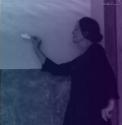
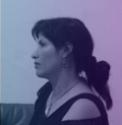
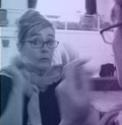
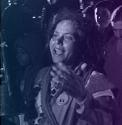
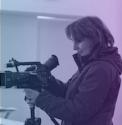
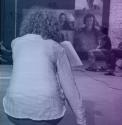
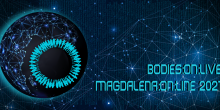
Comentarios
Thinking about where the future of performance practice lies after the pandemic, whether we will return to 'old times' or embrace the digital learning curve, I reflect on my experience of participation at the festival, both as an artist and as an audience member, as well as on the dynamics of knowledge exchange and practice in cyberspace within the Magdalena network at this moment in time.